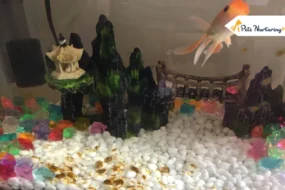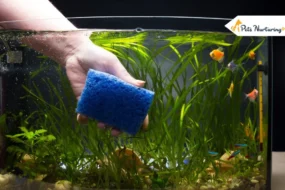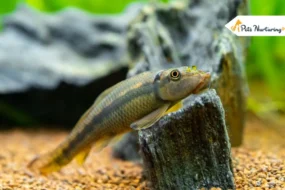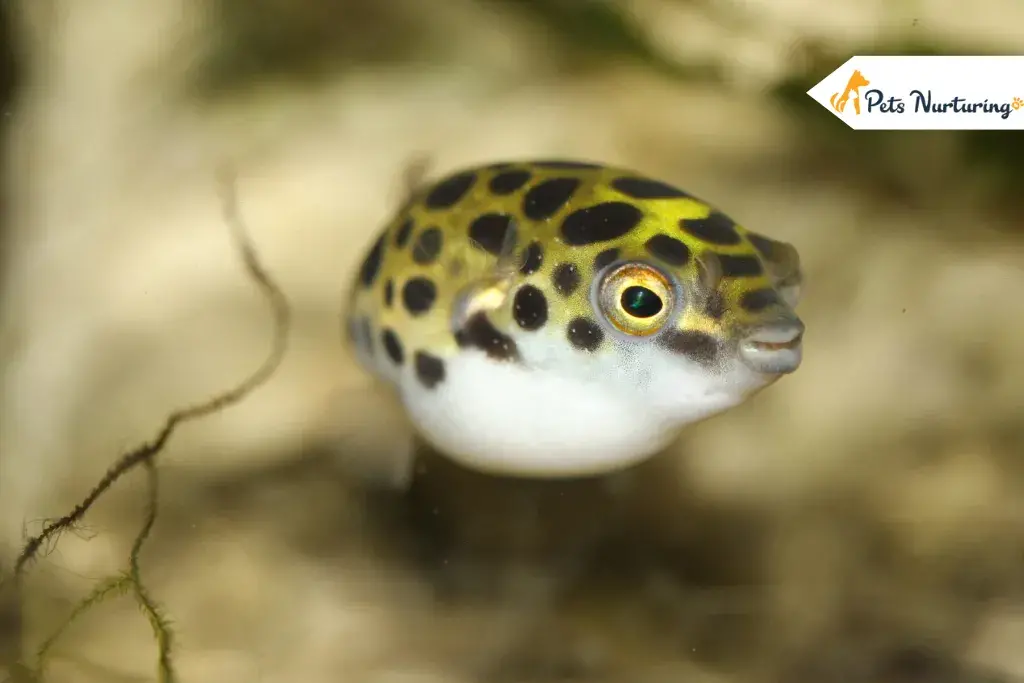
Pea puffer are the smallest of all known Puffer fish and one of the smallest of all fishes in the world. They are intelligent and unique freshwater fish that would make great additions to your aquarium if you are a bit experienced aquarist. Freshwater Puffer fish has always been a subject of interest due to their ballooning ability. Of which, the dwarf Puffer fish being the smallest attracts much more attention and curiosity. Due to too much popularity and demand, these tiny fishes have fallen under the category of vulnerable to threatened.
The freshwater Puffer fish is also famous among aquarists for its liken towards devouring small snails. They are also referred to as Malabar puffer, pea Puffer fish, dwarf Puffer fish, pygmy Puffer fish, and dwarf pea puffer. They get the name pea puffer due to their tiny size.
Overview of Pea Puffer Fish
Pea Puffer Fish Overview
Scientific Name: Carinotetraodon travancoricus
Common names: Malabar puffer, pea Puffer fish, Indian dwarf puffer, dwarf Puffer fish, pygmy Puffer fish and dwarf pea puffer.
Habitat: Tropical watersNative to India.
Care level : Intermediate to Advanced
Temperament: Aggressive and territorial
Pufferfish size: 1.4 inches
Lifespan: 4 years
Diet: Carnivore
Colors or pattern: Yellow (also dependent on sex)
Minimum fish tank size : 5 gallons
Temperature : 77 to 79 degrees Fahrenheit
pH of water : 6.5 to 7
Watertype: Freshwater
Breeding: Lay eggs
Peapuffer Tankmates: Tetra, neon tetra, rasbora, filament barb(read the article below to find more about pea puffer tank mates)
FUN FACT: Pea Puffer fishes can change their colors and can use their eyes independently.
Do These Dwarf Puffer Fishes Puff Up Like Their Bigger Counterparts?
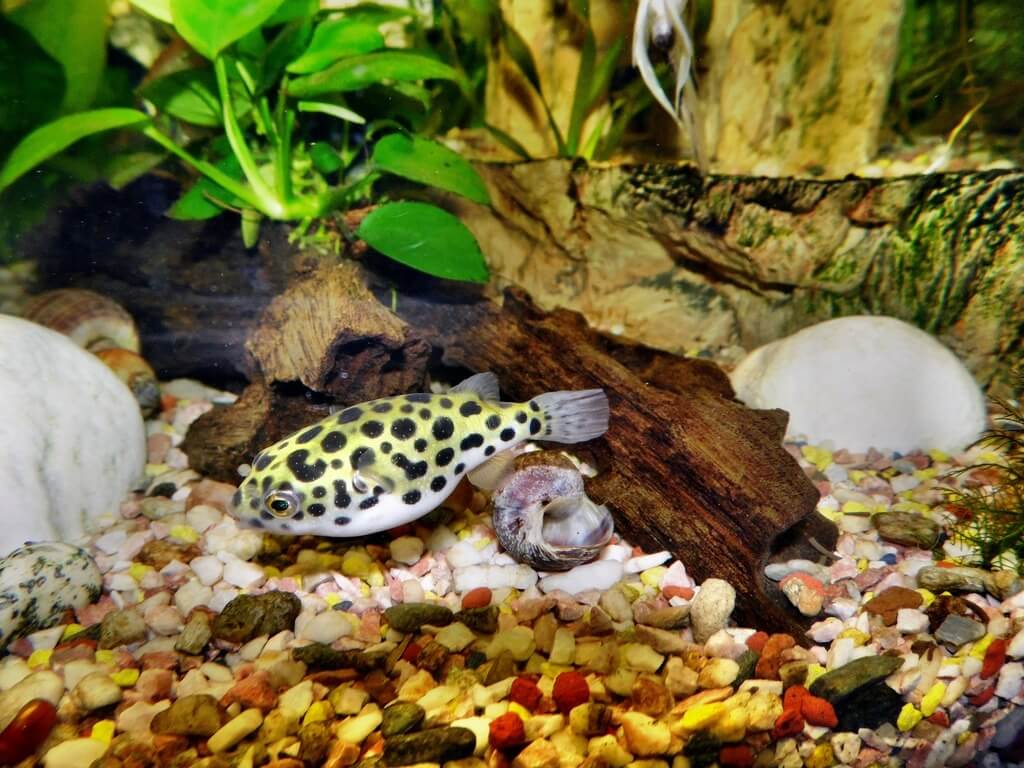
Pufferfishes puff up by sucking in water which helps them increase their size. They shrink back to their normal size soon after. They usually puff up as a defense mechanism to seem bigger and ward off predators. They may also do so when they are stressed.
So yes, pea Puffer fish or dwarf Puffer fishes do puff up but it’s rare. They may puff up for no reason at times or when they are scared or stressed. We strongly advise you to not put your pea puffer fish under stress just to see them puff up as this can be very deteriorating to their health.
Habitat
Puffer fishes are usually found in freshwaters of tropical climatic regions. Pea puffers specifically are native to the southwestern tip of the Indian subcontinent.
Even in tanks, they thrive in freshwater.
Pea Puffer Tank Size
Since these little fishes are feisty in nature, they can get aggressive and territorial if you overcrowd the tank. Thus, having the right size of tank and the right number of fish in one tank is important.
The general rule of thumb is you start with a 5-gallon tank if you have one pea puffer and for every plus one, you add another 3 gallons. This way you can safely keep 6 to 8 dwarf Puffer fish in a 20-gallon tank.
Another thing to keep in mind is to add distractions and decorations to the tank so the fishes can enjoy alone time or have their space. Bare tanks tend to turn into the battleground much more often than fuller ones.
A good size tank and more water also help maintain the biowaste concentration to a lower level, which can be very harmful to your dwarf puffer if the concentration becomes high.
Aggression can also be reduced by keeping the male to female ratio right. One male for every three females is a good combination and helps to keep the tank vibe positive and fight free.
Temperament
Pea puffers, just like the bigger puffers are territorial and aggressive with some specific requirements. They do share their space but only if you get the conditions like tank size, water volume, tank decorations, etc right.
Thus we don’t recommend them for novice aquarists. They have specific dietary requirements, curious personalities, unique looks, and habits. They even learn to recognize their owners eventually.
They can be seen enjoying themselves in all regions of their tank, be it the plantations or open top level of the water.
Appearance
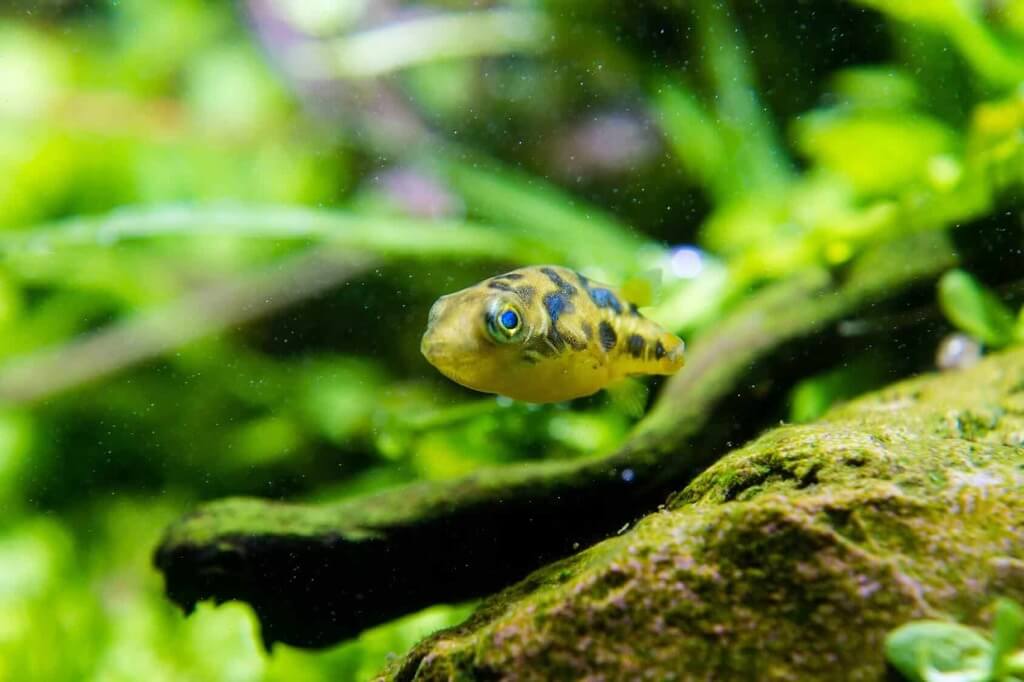
Dwarf Puffer fish has a small size of up to 1.4 inches, round at the body and thin towards the anal and dorsal fins. Their eyes are quite big for their size and can move independently of each other.
Females have light yellow to white bellies, whereas males have bright yellow bellies. This color difference comes in handy if you need to identify their sexes.
The body of a male is darker golden green with a dark stripe running across their belly and females have a light yellow-green body with tiny, random black spots across their bodies. Know more here about Fish That Can Live In a Small Bowl or Aquarium.
Pea Puffer Care
Temperature
Pea Puffer fish does well in tropical temperatures, so if you live in a tropical country and the temperatures are around 73 to 83 degrees Fahrenheit, you do not need to provide any heater for your fish tank.
If you are from a cold climatic region, installing a heater and a thermometer will come in handy.
pH
It’s more important for pea Puffer fishes to have a stable water pH. They do well in the pH range of 6.5 to 8.5 but 7.2 to 7.5, that is the neutral pH is the most ideal for them.
Filter
Filters must be installed to keep the water clean as high levels of biowaste accumulation in the tank can have negative consequences for their health. Make sure to keep the flow rate low as these small pea puffers aren’t the fastest swimmers.
Even if you have a filter in your tank, make sure you change the water and clean the tank manually regularly.
Diet
The dwarf puffers are carnivores and love too much frozen as well as live meat. You can feed them brine shrimp, bloodworms, pest snails, small insects, and blackworms.
They also enjoy larvae, copepods, algae, and cyclops. We recommend feeding them twice a day. Do not overfeed them as this can lead to negative health consequences.
Large Puffer fishes chew on live snails as this helps them with the wear and tear of their ever-growing teeth, but the case with pea puffers is much different. So live snails aren’t as strict a requirement for them.
Light
You can provide them 12 hours of exposure to light most times of the year and reduce it to 10 hours during the winters as this matches the conditions of their natural environment. You can add UV bulbs to the tank for this purpose. pea pufferfish
Substrate and Plants
The best choice for the substrate is small gravel or fine sand. You can add plants like star grass, java moss, anubias nana, etc.
Pea Puffer Tank Mates
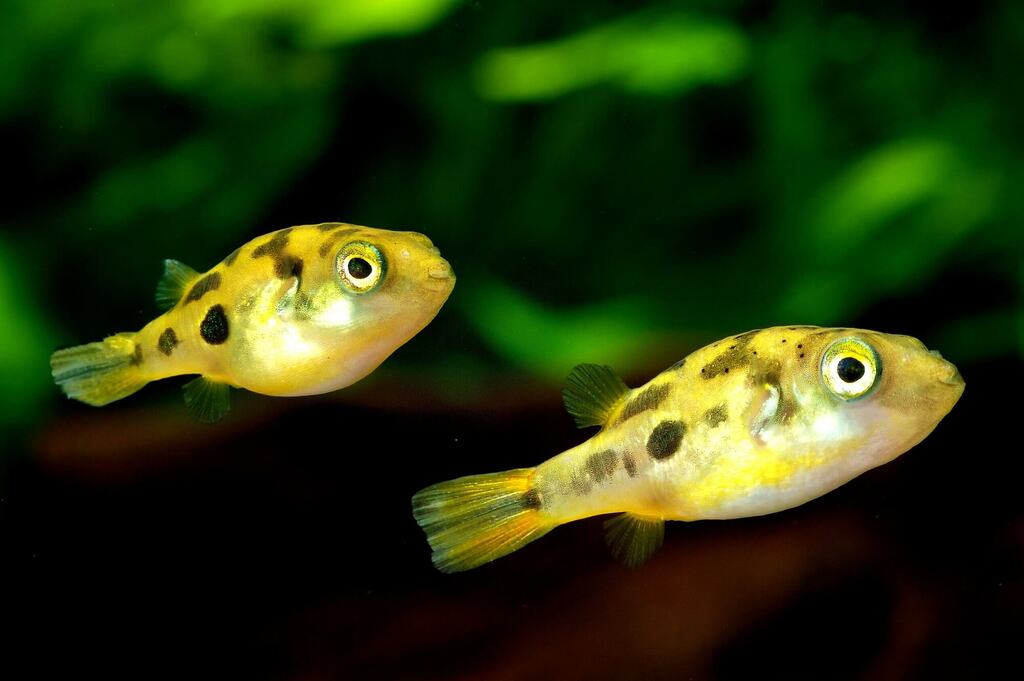
The best pea puffer tank mates are plants, as they keep the water clean and provide much space as well as hideouts for your fish. They are usually well off with fishes of their species.
The timid ones do get along with some other species of their size, but you may end up with an aggressive pea puffer who may hate to share its space with others. So it’s better to be mentally prepared in case your fish doesn’t get along with any other species.
The only problem with this is that you cannot add the fishes that work as clean up crew in your tank, which in turn will increase your tank clean up work.
For pea puffer fishes who do get along with others, some good choices as pea puffer tank mates are dwarf otocinclus, siamese algae eaters, harlequin rasbora, glowlight tetra, ember tetra, filament barb, mosquito rasbora, neon tetra, zebra danio, and leopard danio.
Pea Puffer Cost
The baby Puffer fish price ranges from 3$ to 15$ per fish which is relatively cheap as compared to other popular fishes. Pea puffer cost also depends on demand, breeder, locality, etc.
While getting yourself a baby Puffer fish make sure you pick a healthy fish. One way to make sure that the baby Puffer fish you’re getting is healthy is to look at their eyes, activity levels, and belly. Their eyes must be bright and alert, belly- rounded and they should be actively swimming around.
Make sure you ask the store employee what they feed the baby Puffer fish as they can be picky when it comes to food. dwarf pufferfish
Final Thoughts
If you are a fan of pea puffers, we hope we have provided you with all the information on them to bring them home and fulfill your pea puffer parenting dreams.
Find out more :








